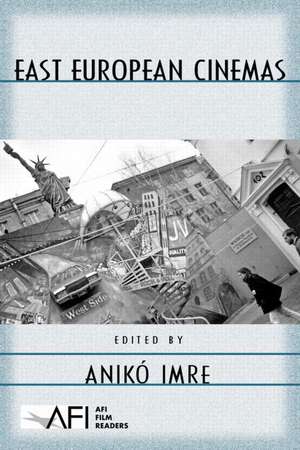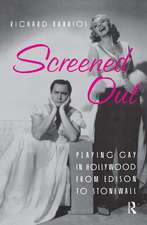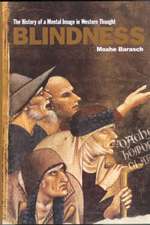East European Cinemas: AFI Film Readers
Editat de Anikó Imreen Limba Engleză Paperback – 14 sep 2005
| Toate formatele și edițiile | Preț | Express |
|---|---|---|
| Paperback (1) | 346.66 lei 6-8 săpt. | |
| Taylor & Francis – 14 sep 2005 | 346.66 lei 6-8 săpt. | |
| Hardback (1) | 947.36 lei 6-8 săpt. | |
| Taylor & Francis – 14 sep 2005 | 947.36 lei 6-8 săpt. |
Din seria AFI Film Readers
-
 Preț: 332.52 lei
Preț: 332.52 lei -
 Preț: 291.52 lei
Preț: 291.52 lei -
 Preț: 292.68 lei
Preț: 292.68 lei -
 Preț: 301.64 lei
Preț: 301.64 lei -
 Preț: 289.93 lei
Preț: 289.93 lei -
 Preț: 324.38 lei
Preț: 324.38 lei -
 Preț: 315.07 lei
Preț: 315.07 lei -
 Preț: 486.22 lei
Preț: 486.22 lei -
 Preț: 483.34 lei
Preț: 483.34 lei -
 Preț: 481.38 lei
Preț: 481.38 lei - 18%
 Preț: 1000.27 lei
Preț: 1000.27 lei -
 Preț: 446.37 lei
Preț: 446.37 lei -
 Preț: 335.33 lei
Preț: 335.33 lei -
 Preț: 386.51 lei
Preț: 386.51 lei - 18%
 Preț: 1009.76 lei
Preț: 1009.76 lei -
 Preț: 482.35 lei
Preț: 482.35 lei - 18%
 Preț: 1007.36 lei
Preț: 1007.36 lei -
 Preț: 374.41 lei
Preț: 374.41 lei - 30%
 Preț: 769.10 lei
Preț: 769.10 lei -
 Preț: 440.27 lei
Preț: 440.27 lei - 18%
 Preț: 1019.22 lei
Preț: 1019.22 lei - 18%
 Preț: 1075.74 lei
Preț: 1075.74 lei -
 Preț: 402.98 lei
Preț: 402.98 lei -
 Preț: 355.36 lei
Preț: 355.36 lei -
 Preț: 359.08 lei
Preț: 359.08 lei -
 Preț: 355.20 lei
Preț: 355.20 lei -
 Preț: 442.50 lei
Preț: 442.50 lei - 18%
 Preț: 1218.08 lei
Preț: 1218.08 lei - 18%
 Preț: 1002.68 lei
Preț: 1002.68 lei - 25%
 Preț: 852.63 lei
Preț: 852.63 lei -
 Preț: 357.33 lei
Preț: 357.33 lei - 25%
 Preț: 766.49 lei
Preț: 766.49 lei -
 Preț: 354.28 lei
Preț: 354.28 lei - 12%
 Preț: 318.90 lei
Preț: 318.90 lei - 18%
 Preț: 1060.11 lei
Preț: 1060.11 lei
Preț: 346.66 lei
Nou
Puncte Express: 520
Preț estimativ în valută:
66.33€ • 69.26$ • 54.90£
66.33€ • 69.26$ • 54.90£
Carte tipărită la comandă
Livrare economică 05-19 aprilie
Preluare comenzi: 021 569.72.76
Specificații
ISBN-13: 9780415972680
ISBN-10: 041597268X
Pagini: 288
Ilustrații: 11 b/w images and 11 halftones
Dimensiuni: 152 x 229 x 15 mm
Greutate: 0.39 kg
Ediția:1
Editura: Taylor & Francis
Colecția Routledge
Seria AFI Film Readers
Locul publicării:Oxford, United Kingdom
ISBN-10: 041597268X
Pagini: 288
Ilustrații: 11 b/w images and 11 halftones
Dimensiuni: 152 x 229 x 15 mm
Greutate: 0.39 kg
Ediția:1
Editura: Taylor & Francis
Colecția Routledge
Seria AFI Film Readers
Locul publicării:Oxford, United Kingdom
Notă biografică
Anikó Imre is research associate at the Amsterdam School of Cultural Analysis.
Cuprins
Anik Imre, Introduction: East European Cinemas in New Perspectives PART 1: Gender Identity and Representation 1. Katarzyna Marciniak, Second Worldness and Transnational Feminist Practices: Agnieszka Holland's A Woman Alone 2. Marguerite Waller, What's in Your Head: 'History' and 'Nation' in Ibolya Fekete's Bolse vita and Ghetto Art's Making the Walls Come Down 3. Tomislav Z. Longinovic, Playing the Western Eye: Balkan Masculinity and Post-Yugoslav-War Cinema 4. El?bieta H. Oleksy, The Politics of Representing Gender in Post-World War II Polish Cinema and Visual Art 5. Petra Hanáková, Voices from Another World: Feminine Space and Masculine Intrusion in Sedmikrásky and Vrazda ing. Certa. PART 2: (Post)modernist Continuities 6. Melinda Szaloky, Somewhere in Europe: Exile and Orphanage in Post-World War II Hungarian Cinema 7. Dusan Bjelic, Global Aesthetics and the Serbian Cinema of the 1990s 8. Catherine Portuges, Traumatic Memory, Jewish Identity: Remapping the Past in Hungarian Cinema 9. Peter Hames, The Ironies of History: The Czech Experience 10. András Bálint Kovács, Gábor Bódy: Precursor of the Digital Age 11. Ágnes Pethö, Chaos, Intermediality, Allegory: The Cinema of Mircea Daneliuc PART 3: Regional Visions 12. KrissRavetto-Biagioli, Reframing Europe's Double Border 13. Roumiana Deltcheva, Reliving the Past in Recent East European Cinemas 14. Christina Stojanova, Fragmented Discourses: Young Cinema from Central and Eastern Europe 15. Dina Iordanova, The Cinema of Eastern Europe: Strained Loyalties, Elusive Clusters













